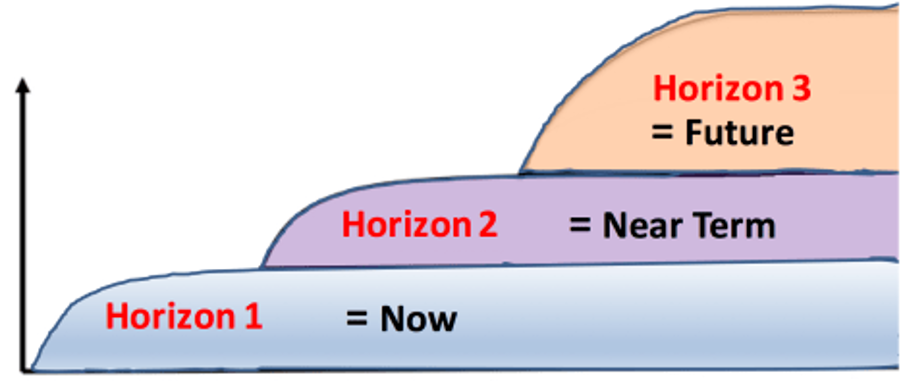In our previous blog post, we explored the importance of having a clear product vision. Now, let's dive into how to develop this vision using a practical framework. In this second part of our blog series, we'll walk you through the process of defining your product vision and help you understand the different horizons to consider.
Even when the vision is set, many teams struggle to connect the future aspiration of the product with the functionality they need to work on tomorrow. This is where McKinsey's three horizons model comes in. I adapted this model and used it as a framework to define a product vision based on: the aspiration of the organization, the customers it wants to serve, the value proposition for those customers, the essential features that this product must have.
Here's how...
Long-term product vision
The long-term vision is what you want your product to be in three years. This is why your product was designed in the first place and represents the product at scale, delivering all of its benefits and contributing to the overall vision of the organization. Defining long-term vision can be achieved by aligning it with your company's strategic goals.
Ask yourself, "What must be true for my product to contribute to these goals?" Another approach is to imagine your product as a person and write a reverse eulogy, envisioning what your product will be known for.

Short-term product reality
The short-term horizon focuses on the current state of your product, considering what it can realistically achieve in the next 3-9 months. This horizon is based on the type of customers your product serves, the value proposition it offers to those customers, and the features needed to deliver that value proposition. It's crucial to align your short-term vision with the reality of what's possible, and integrate Agile Ways of working into your strategy to ensure these short-term goals are met while moving closer to your long-term aspirations.
Medium-term product bridge
The medium-term horizon acts as a bridge between long-term and short-term visions. It is defined by the value proposition needed to attract customers and allow your product to grow. Although your product is different in the medium term versus the short term, it still serves as a stepping stone to your long term vision.

Conclusion
By breaking down your product vision into three horizons – long-term, short-term, and medium-term – you can establish a clear roadmap for success. This framework ensures your team understands the direction they need to go and helps them prioritize their efforts effectively.
In the final part of this blog series, we'll explore how to translate your vision into actionable plans, including developing your product roadmap and defining your product offering. Stay tuned for practical information to accelerate your product's success.
Want to learn more about how a well-defined product vision can lead to success? Want to take your product development to the next level? Our team of experts lays the foundation for developing and validating products are at once: what customers want, and aligned with strategic business goals. Check out our recent success stories, or get in touch now to learn more.


